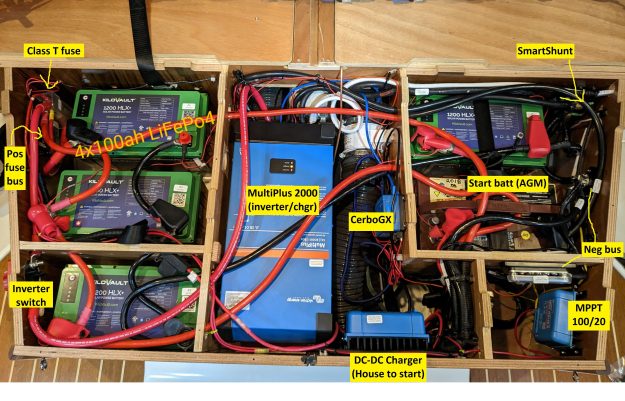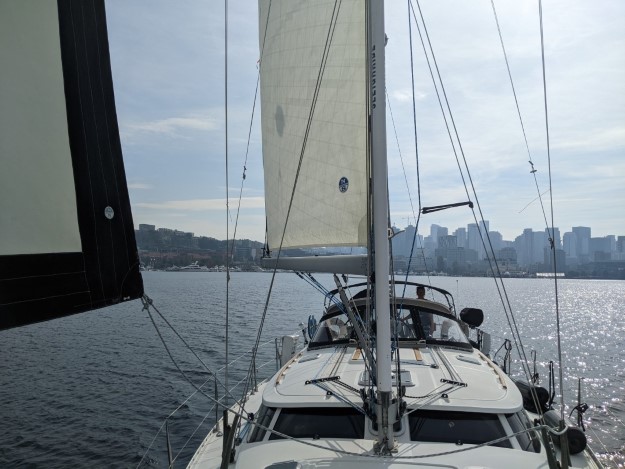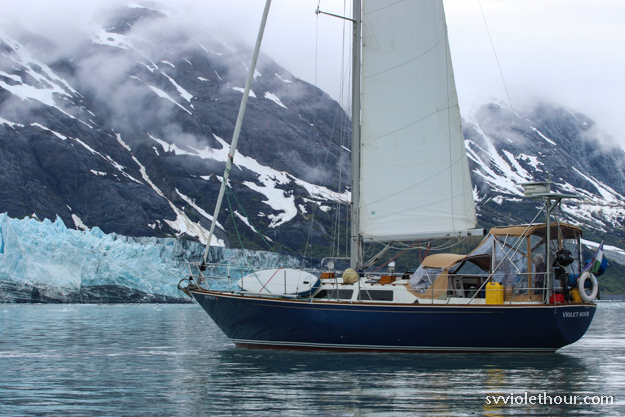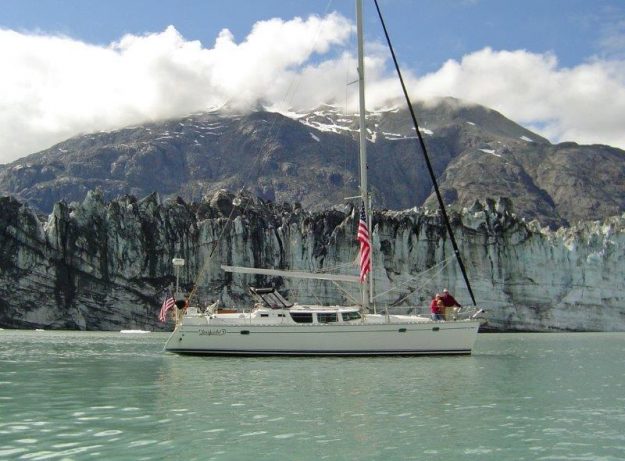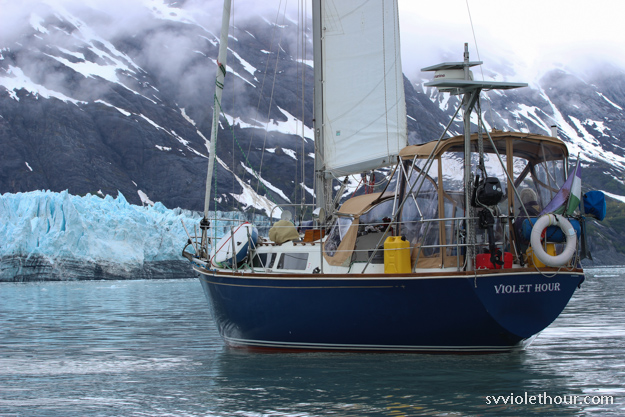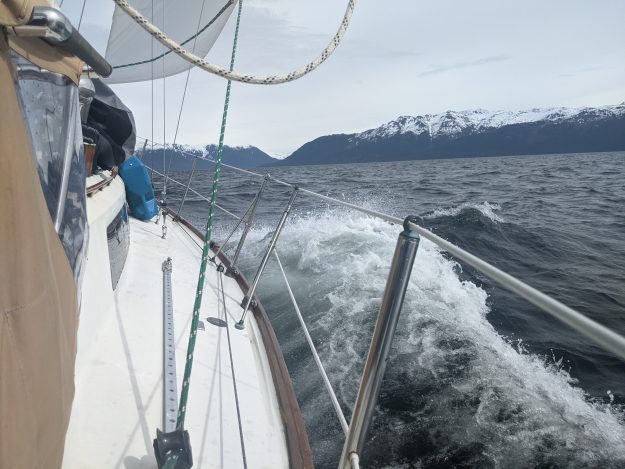Fishing from a sailboat isn’t quite as simple as on boats purpose-built for fishing. Yet, it can be really rewarding and we found it’s amazingly fun in Alaska, where fish are plentiful. In 2 of our 6 seasons cruising WA and BC we fished occasionally but never caught anything. It took coming to Alaska to finally learn how to fish.
From April thru August 2021, we caught 47 fish over the course of about 50 days with active fishing effort. Some days we’d spend a couple hours out in the dinghy, catching nothing. Other days we’d go out and catch something within 15 minutes.
-
- 13 Halibut (all 18-25” except for one 51” monster!)
- 21 Salmon (13 silvers, 7 pink, and 1 sockeye)
- 6 Pacific cod
- 7 Rock fish
- 28 Dungeness crab (we stopped crabbing around July when we switched to focusing on fish)

Fishing requires knowledge, patience and skill. It can be very frustrating at times (like when sitting in the cold rain not catching anything, or when we lost gear to the bottom). Yet it can be rewarding – other than being vegetarian, I think catching your own protein is one of the most sustainable ways to live in a remote area.
Catching our own food gave us a much deeper appreciation for the sacrifice made, motivating us to respect every fish caught – safely releasing ones we didn’t keep and carefully filleting the ones we did keep to maximize use. Meat (and groceries in general) is quite expensive in Alaska, especially in the small remote villages we visit when cruising by boat. Many of the small towns get their groceries by barge just once a week, and most of their meat is frozen – we found frozen beef with “packed on” dates from over a year ago!
Buying groceries in the store means lots of fuel was burned to ship it there (container ship, barge and truck) and refrigerate it. When catching fish we could be sure that it was as fresh as it could possibly be and processed in the most optimal way. Fish is also extremely healthy, packed with healthy omega-3 fatty acids.

The first salmon I ever filleted (a sockeye). An imperfect filleting job, but I got better after this.

We had a lot of fish tacos and also numerous other delicious preparations.
Fishing Advice
A few caveats – we’re not experts and there are certainly people that know a lot more! (like all the sport charter fishing guides and commercial fisher-people). Fishing isn’t a science and sometimes stuff that should work doesn’t (or vice versa). Fishing is very seasonal and I’m not going to cover that or other things you can easily learn from existing online resources.
Also worth noting – in the fishing world many people are protective about their fishing spots and can be secretive or even hostile towards newbies. This is quite a contrast to the sailing / boating world where there’s a culture of helpfulness, especially towards newcomers. Certainly not everyone takes this position (we met very helpful people too!) but some people who fish believe that additional people fishing will “steal” their fish or deplete the prime spots.
I don’t buy this argument because beginners who are truly interested in learning fishing will learn to do it whether you help them or oppose them. So it seems much better to me to be helpful and sharing of information. In the modern era of Internet and social media, there are no truly “secret” spots anymore anyway.
And for those who think an additional sport fisherman is going to deplete the availability of fish for themselves, they should consider that industrial-scale commercial fishing operations are harvesting far more fish than a sport fisherman, well before it gets to their preferred spots, with a lot of bycatch (unintentionally caught fish which are often wasted).

The Dungeness crabs can be very big in Alaska – often 8-9″. (Note: I have a proper crab ruler but it doesn’t go this high – that’s why I pulled out the tape measure).
Continue reading →
